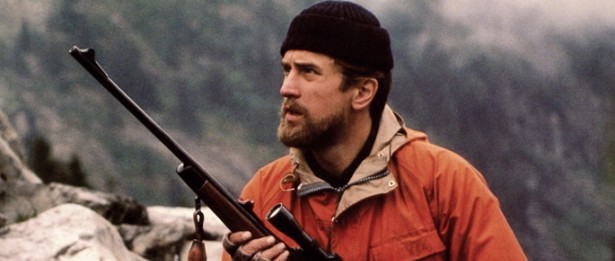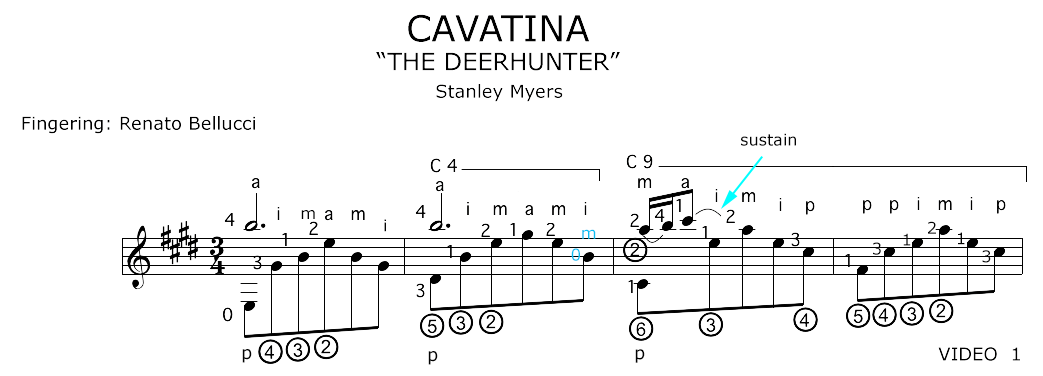
Stanley Meyers, "Cavatina" (TAB)
Transcription and Fingering: Renato Bellucci
It is very hard for a new piece to suddenly become "the new classic" overnight especially after piece like Romance and Recuerdos have been around forever.
Cavatina was part of the music track of a TV series and composer Stanley Myers developed it into a full piece under the insistence of Australian guitarist John Williams. It later became the soundtrack of award winning movie "The Deer Hunter", a Vietnam saga with a great cast of actors including Robert de Niro, Maryl Streepand Christopher Walken. John Williams later performed it in duo (with orchestral accompaniment) with singer Cleo Lane.
Just like with every great thing in life, simplicity is at the base. Melodically and harmonicallyCavatina is simply straightforward and it reaches climaxes in a gentle though powerful way.Technically, Cavatina is very challenging. The solo guitar tries to reproduce the guitar duet performed by Williams in the movie soundtrack version (Williams performed both guitar tracks in the recording that made the piece famous). Keeping the melody separated and at the same time very much bonded and dealing with the long succession of barres throughout different sections of the piece, calls for a not less than perfect fingering and the correct use of the playing apparatus.
Cavatina's main technical challenge is the long succession of barres which, besides presenting difficulties of their own, pose the extra challenge of having to produce a smooth sounding melody. Achieving all this while intense force is applied to the left hand is a conquest.
This is one of the few guitar pieces I wanted to play from the first moment I heard it.
Staff and Video 1
Video 1
Technique explanation. Part 1
Alternative fingering: July 26, 2013
Analysis:
Play the melody using fijación* in finger 4. Fijación is explained in the technique section. You will be using barre chords throughout Cavatina. You must incorporate points in the playing where you have "programmed" micro and macro relaxations for the left hand. Unless you relax your left hand regularly, your playing will become tense and the music will cease to flow. Notice how I put the fingers down on the fingerboard as I need them. In other words, arpeggios are built as the notes that compose them come into play. Doing otherwise will make your playing sloppy and you will be strained of precious energy that will be needed further down the work.
Technique explanation: Video 1
The continuation of this masterclass is in the members area, become a member today.
 Back to Top
Back to Top


